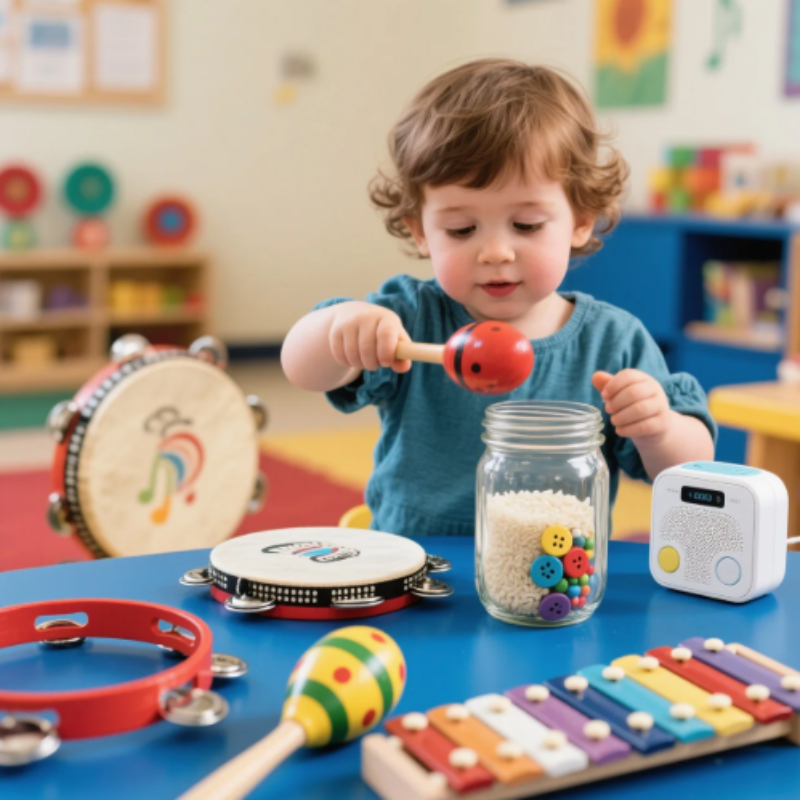Introduction
Parenting a teenager can feel like steering through a fog: you know the destination is adulthood, but the visibility changes by the hour. When behavioral issues enter the picture—defiance, mood swings, school avoidance, risky experiments—it’s easy to panic or take it personally. In reality, these behaviors are often surface signals of deeper emotional, biological, or developmental needs. Teens are rewiring their brains, negotiating independence, and testing boundaries they’ll need to manage on their own later.
This article equips you with practical, compassionate strategies to address difficult behaviors without damaging the relationship. You’ll learn to understand root causes, communicate in ways that build trust, set clear boundaries, seek help when needed, and protect your own energy. Think of it as a toolkit: not a one-time fix, but a set of moves you can use, repeat, and adapt over time.
Understanding the Root Causes of Teen Behavior
Adolescence is a major neurological remodel. The reward and emotion centers (which drive urgency, novelty seeking, and strong feelings) develop ahead of the prefrontal cortex (which supports planning, impulse control, and cause-and-effect thinking). That mismatch often looks like “won’t,” when it’s partly “can’t yet.” Add hormonal shifts and rapidly changing peer hierarchies, and even a steady teen can feel wobbly.
External pressures add weight: academic workload, performance expectations, social media comparison, sleep loss, or unresolved stress or trauma. Digital overexposure can amplify it all—constant notifications, algorithm-shaped norms, late-night scrolling that robs sleep and resilience. When teens act out, they’re often trying to cope, numb, or communicate a need for control, connection, or relief.
Reframing behavior as a message changes your response. Instead of “How do I stop this?” try “What is this behavior trying to solve?” For example:
- Anger may be a shield for embarrassment or fear of failure.
- Withdrawal may signal overload, shame, or low mood.
- Risk-taking may be an attempt to belong or feel something other than stress.
Your job is to decode the signal and guide healthier ways to meet the underlying need.

Building Strong Communication and Trust
Communication with a teen works best when you contain your urgency. Think of trust like a Wi-Fi signal—you strengthen it by lowering interference, not by shouting at the router. Use these fundamentals:
1) Lead with presence, not a lecture: Sit side-by-side, keep your voice low, and start with curiosity: “Rough day? Want to vent or want help?” Giving the choice restores agency.
2) Practice validation before problem-solving: Validation is not agreement; it’s acknowledgment. Try: “Given what happened, it makes sense you’re upset.” Once they feel understood, they’ll be more open to hearing guidance.
3) Use the OARS approach (from motivational interviewing):
- Open questions: “What made today go off track?”
- Affirmations: “You showed a lot of restraint walking away.”
- Reflections: “You were frustrated and didn’t want to get embarrassed.”
- Summaries: “So the main issue was the group chat blow-up, and you want a plan for next time.”
4) Make time predictable: Create a weekly “no-agenda check-in” (15–20 minutes) where no one is in trouble. Reliability builds safety, and safety lowers defiance.
5) Repair quickly after conflict: A simple script works: “I didn’t like how I handled that. I’m sorry for raising my voice. I care about you and want to restart.” Repair teaches accountability better than any lecture.

Setting Boundaries and Consistent Discipline
Boundaries are like traffic lights: they prevent chaos and protect everyone. Teens push limits to see if the signals are real and predictable; inconsistent responses are like malfunctioning lights—no one feels safe. The goal is firm and kind: clear rules, transparent reasons, predictable outcomes, and lots of chances to reset.
Create a “House Agreement.”: Co-write a short document covering sleep, screens, school responsibilities, chores, curfew, and substance rules. Keep it on the fridge. Revisit monthly. When teens help build the rules, they’re more likely to honor them.
Use a Consequence Ladder (logical, not punitive): Start small and escalate only as needed. Tie consequences to the behavior (“logic” beats “punishment”). Example: late for curfew → earlier curfew for a week; misuse of phone → reduced app access plus practice using Do Not Disturb; disrespectful language → repair action like a sincere written apology.
Sample Boundary Matrix
| Rule/Expectation | Why it Matters | Logical Consequence (First Step) |
|---|---|---|
| Devices off by 10:30 PM | Sleep fuels mood, focus, and impulse control | Phone charges in kitchen for 3 nights |
| Homework plan shared by 6 PM | Avoids last-minute stress | 30 mins screen delay next day to plan ahead |
| No vaping/alcohol | Health and legal safety | Loss of social outing + health info session + check-ins |
| Speak respectfully | Keeps home safe for all | Repair: apology + tone reset practice |
| Curfew 10 PM school nights | Rest and routines | Earlier curfew (9:30) for 1 week, then review |
Keep consequences consistent, brief, and paired with coaching

Seeking Professional Support When Needed
Inviting help doesn’t mean you’ve failed; it means you’re building a support team. Consider professional evaluation if you see persistent patterns that impair daily life, such as:
- Ongoing school refusal, plummeting grades, or frequent suspensions
- Self-harm, suicidal thoughts, or threats toward others
- Substance use, risky sexual behavior, or illegal activity
- Severe anxiety, depression, obsessive patterns, or eating concerns
- Major sleep disruption, isolation, or loss of interest in once-enjoyed activities
Common, effective options:
- CBT (Cognitive Behavioral Therapy): Links thoughts, feelings, and actions; builds coping and problem-solving skills.
- DBT skills (Dialectical Behavior Therapy): Teaches emotion regulation, distress tolerance, and interpersonal effectiveness—excellent for big feelings and impulsivity.
- Family Therapy / Functional Family Therapy: Improves communication patterns, roles, and conflict cycles; aligns caregiver responses.
- Parent Management Training (PMT): Coaches parents on consistent reinforcement, de-escalation, and structured routines.
- School-based supports: Learning assessments, counseling, accommodations, or behavioral plans coordinated with teachers and counselors.
- Pediatric or psychiatric consults: For diagnostic clarity and, when appropriate, medication as part of a broader plan.
How to start the conversation with your teen:
“Things feel heavy for both of us, and I don’t want either of us handling this alone. A counselor can give us tools so life feels lighter. We’ll choose someone together, and you’ll have a say in what we share.”

Practicing Self-Care and Parental Resilience
You can’t pour from an empty cup, and teens sense our emotional fuel level. Chronic conflict breeds exhaustion and guilt; if you burn out, you’ll rely on quick reactions instead of thoughtful coaching. Build resilience the way athletes build stamina: small, daily, repeatable routines.
Micro-habits that actually fit real life:
- Sleep first. Protect your bedtime for a week and notice how conflicts shrink.
- 2-minute resets. Step outside, count 5 things you see/hear/feel. Short nervous-system breaks prevent blowups.
- Boundary buddy. Text a trusted adult before a tough conversation and after it ends. Accountability helps you hold the line.
- Joy appointments. Schedule one small pleasure daily (music, walk, hobby). Joy is not a reward; it’s maintenance.
- Self-talk upgrade. Replace “I’m failing” with “I’m in the middle of learning a harder skill set.”
De-escalation script for heated moments:
- Breathe and lower your voice.
- “We’re both heated. I’m going to take five minutes and then we’ll try again.”
- Return as promised. “Thanks for waiting. Let’s solve one small part of this.” Reliability restores safety.
When to seek your own support:
If you’re experiencing persistent insomnia, dread, hopelessness, or relationship strain, consider a counselor or parent group. Learning alongside other caregivers normalizes the struggle and multiplies your practical tools.

Putting It All Together: A Practical Weekly Rhythm
Consistency beats intensity. Instead of dramatic crackdowns, use a simple rhythm that keeps everyone aligned.
- Sunday 20-minute Family Sync: Review the week (curfews, practices, deadlines). Revisit the House Agreement. Pick one skill to practice (e.g., planning a study block).
- Mid-week 15-minute One-on-One: Parent and teen meet without devices to check stress level, social stuff, and sleep.
- Daily 2-minute “Goodnight Touchpoint”: Knock and say goodnight; ask “Anything on your mind you want to park for tomorrow?”
- Friday Reset: Celebrate one effort (“You started homework without a reminder”). Small wins fuel bigger changes.
Troubleshooting guide:
- If rules keep getting ignored: Shrink the rule to the next doable step and apply the first rung of the consequence ladder consistently for one full week.
- If conversations explode: Shorten them. Aim for two minutes of validation + one practical next step.
- If school is the battleground: Separate the relationship from the task. “Our relationship matters more than this worksheet. Let’s pick one small piece to complete, then we’ll move.”
- If devices dominate: Pair access with responsibilities (“Screens unlock after plan is shared and bedtime is set”). Use tech to tame tech—alarms, focus modes, router schedules.
- If motivation is low: Tie tasks to values. “You care about your team. Sleep and attendance help you play well.” Values create the “why” that rules lack.
Conclusion
Parenting a teenager with behavioral issues is not a referendum on your worth—it’s a complex season that asks you to blend empathy with structure. When you understand the developmental forces at play, you can interpret behavior as information rather than defiance alone. When you communicate with validation, set predictable boundaries, and bring in professional support as needed, progress becomes more likely and conflict less explosive.
Most importantly, your steadiness is contagious. Protect your energy, celebrate small wins, and return to the basics when things get messy: understanding, communication, structure, support, and self-care. You are not alone in this work, and with patience and practice, your home can become a training ground for the skills your teen will carry into adult life.





